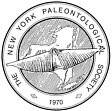
| NEW YORK |
| PALEONTOLOGICAL SOCIETY |
| FIELD TRIPS |
FIELD TRIP ANNOUNCEMENT
FOSSIL COLLECTING IN MADISON COUNTY
New York State
Saturday, October 5, 2024
Meeting up at 9:00 A.M.
We will visit two small quarries in Madison County to collect Mid Devonian fossils from the Moscow formation of the Hamilton group. The formation is primary comprised of shale and silt stone deposited via the Catskill delta complex into the Appalachian basin approximately 398 to 385 million years ago. At this time, what is now NY state was located near the equator and covered by shallow tropical seas. The formation contains a wide array of marine invertebrate fossils including Trilobites, Cephalopods, Brachiopods, Bivalves, and Gastropods.
Registration is limited to 30 members. Patrick will provide more information shortly before the trip.
The Guest Field Trip Leader and Coordinator will be Patrick Murphy.
Note, all those attending must be members of the New York Paleontological Society.
THE SITES:
We will be visiting two sites for the day.
For more information, please contact president@nyps.org .